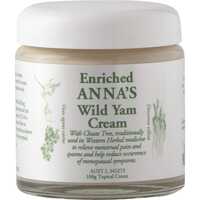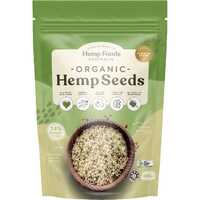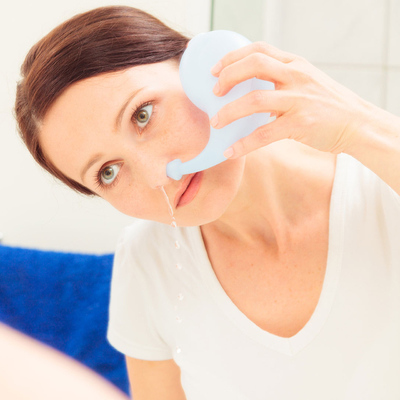You’re miserable. Itchy, watery eyes, sinus congestion, sneezing and wheezing are all part of the seasonal allergies that plague many of us. New growth in spring, dust from harvest, pet dander, and mould all contribute to this inflammation of the sinuses and may lead to chronic rhinosinusitis, the chronic inflammation and infection of the sinus cavity. The good news is there's an all natural way to treat your allegies - a Net Pot!
What are Allergies?
Allergies, or allergic rhinitis, come from airborne particles entering the nasal cavity that are then attacked by the immune system. Although normally harmless, the immune system creates antibodies to defend the body against the particles, causing allergy symptoms. For some, allergens such as dust and pollen continue to collect in the sinus cavity, instead of being flushed out with normal nasal secretions. This creates a film, or barrier, which allows bacteria to grow infection the sinuses and enhancing the physical symptoms.
Treating Allergy Symptoms
Over-the-counter allergy remedies abound. From steroid-laced nasal sprays to a once-daily pill, each medication claims to control your allergies and give you much-needed relief and to a point, they’re correct. These pharmaceutical remedies treat the symptoms produced by the immune system’s response to the airborne allergen, without treating the cause.
Treating the Cause of Allergies
Ayuverdic medicine, with its’ roots in ancient Indian culture, has long treated the cause of seasonal allergies. Using sinus irrigation, with a saltwater solution and a neti-pot or other sinus rinse, the sinus cavity and all nasal passages are cleared. This method not only removes the airborne allergens but also removes any bacterial buildup. Best of all, sinus rinsing has no negative side effects and does not require a trip to the physician for testing or a prescription.
How do Neti Pots Work?
Neti-pots flush out allergens, bacteria and other foreign particles with a steady stream of a sterile saltwater solution. The small spout directs the solution into one nostril, washing away allergens as it exits the other nostril.
How to Get Started
Enjoying a rise in popularity, neti-pots are more widely available. To start treating the cause of your allergies, you will need a neti-pot and either a premade solution or the necessary ingredients to make your own, cooled boiled water and Himalayan salt.
Mix the premade solution in the neti-pot to avoid outside contamination. If making your own solution add ½ to 1 teaspoon of Himalayan salt to 2 cups of boiled water. Water should be cooled to just above room temperature. Test temperature on the forearm before using. It is important to use water that has been boiled to reduce the risk of secondary infections caused by bacteria in the water source.
Leaning over a sink, or in a bathtub or shower, with your face parallel to the floor, tilt your face to the side. Insert the neti-pot spout into the upper nostril, taking care to achieve a complete seal. Gently pour up to half of the solution into the nostril while breathing through your mouth. After a few moments, the water will exit through the lower nostril. Gently blow your nose to clear any remaining mucus and water before tilting your head to the opposite side and repeating the process.
If some water drains into your throat simply spit it out. It will take some practice to achieve the perfect angle to rinse your sinuses.
Rinse the neti-pot with fresh water and allow to air dry before using again.
...and remember, qualified nutritionists at Healthy Being are available to offer further general advice to help guide you in selecting the right products. So please, feel free to contact us at any time!
 Jessica is a natural lifestyle coach who specialises in green living. A regular contributor to HB Insights, she's passionate about sharing with others how transitioning to a natural lifestyle provides benefits to themselves, their communities and their environment.
Jessica is a natural lifestyle coach who specialises in green living. A regular contributor to HB Insights, she's passionate about sharing with others how transitioning to a natural lifestyle provides benefits to themselves, their communities and their environment.


 Certified Organic
Certified Organic Vegan Friendly
Vegan Friendly  Vegetarian
Vegetarian Organic Ingredients
Organic Ingredients Dairy Free
Dairy Free Gluten Free
Gluten Free Keto Friendly
Keto Friendly





























